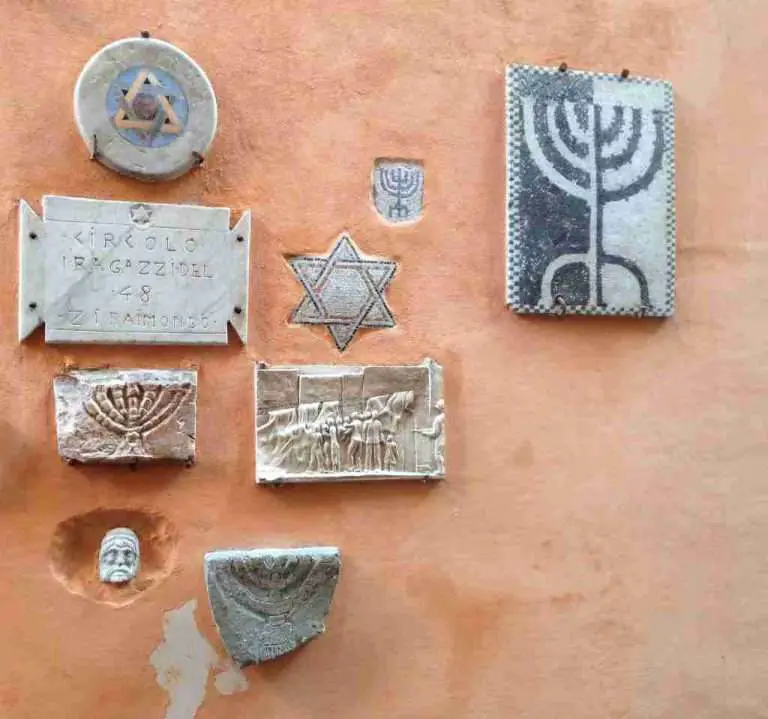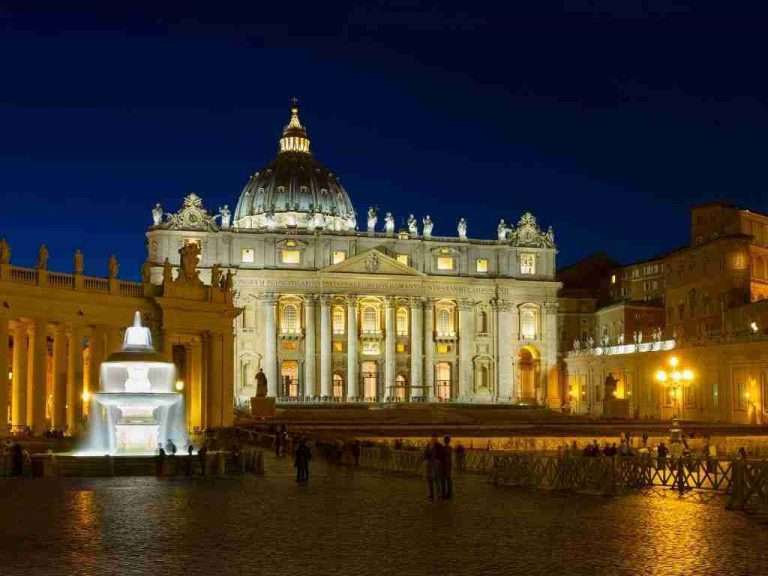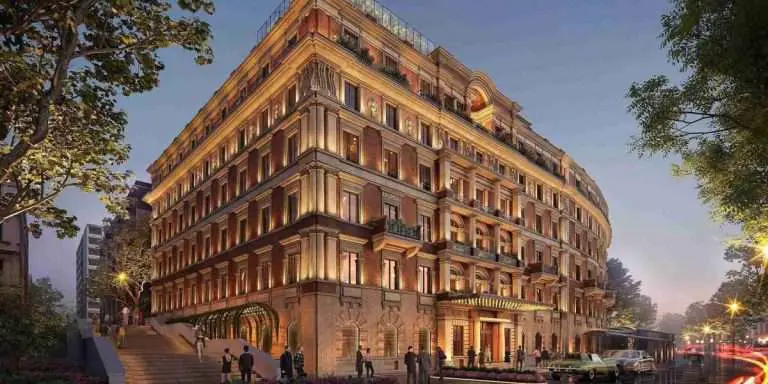
Everything just fit better when I lived in Rome.
Even though I ate pasta every day — and pizza at least once a week, if not more — I was slimmer and felt better when I lived there.
I am of average size. I drink wine. I crave — and, yes, eat — plenty of things that are bad for me. I exercise occasionally and rarely, if ever, restrict my diet.
But there was something about living in Rome that helped move the scale lower.
As I start to emerge out of quarantine and a year of watching my weight creep upwards, I have begun to think about what my diet was like while I lived in Rome. What things did I do differently? What practices can I adopt to regain the vitality and waistline that I once had?
I am writing about my Roman diet for my own sake. So I should add a disclaimer here that I am not a nutritionist or dietician. There is no rhyme or reason to this diet or any scientific backing. But hey, it may work for you.
Here’s what I did:
Coffee, Water, or Wine – There Are No Other Beverages
Yes, there are juices and beers and delicious aperitivi. But mostly my daily beverage intake came from three different categories: coffee, water, or wine.
First, I drank a lot of strong coffee. I started the day with a macchiato or cappuccino. Around 9 or 10, I would take another coffee — usually an espresso or macchiato. After lunch? Another espresso. Late afternoon pick-me-up? Yet another espresso.
These extra coffees were social occasions as much as anything, a chance to stretch my legs (by walking to the bar next door) and pick up more Italian. Luckily, the portion sizes were small and I sometimes went for decaf or a caffè d’orzo, a barley-based coffee, so I wouldn’t get too strung out on caffeine.
In between, I drank water. I prefer acqua frizzante — fizzy water — which is always available in refrigerators in pizzerias, in glass bottles on restaurant menus, and on tap at cafes.
I usually had a glass of wine with dinner, red or white depending on the meal. But I also had water along with the wine.
Lots of Long Walks and Occasional Short Runs
Finding motivation to walk or run was easy in Rome given the scenery.
I relished getting up early and taking a jog around Villa Borghese or through the empty streets as the market vendors were setting up. Some days, I would skip lunch or grab a walking lunch (pizza, gelato, or tramezzino) so I could take a stroll through the city or window shop.
My eyes were hungrier than my stomach. But in this case, I was craving the views and not food.
I also just walked a lot more in general. If I needed something from the store or market, I walked there. I often walked to work. Or, when I took the bus, I would get off a few stops early so I could stop at a café or a newspaper kiosk.
Of course, this is more easily done in a city. But I was much more active. I usually got my 10,000 steps in before noon without even thinking about it.
Pasta Every Day
There are plenty of people in Italy that follow low-carb diets, in spite (or because) of the carb-heavy diet there. But most people I knew ate pasta every day for at least one meal, if not two.
I was not about to give up eating pasta when I had the opportunity to eat the world’s best plates of amatriciana, gricia, and cacio e pepe, not to mention many other varieties of pasta. Typical Roman dishes are often heavy with fatty pork and/or cheese. But portion sizes are reasonable, equivalent to about a quarter of the unconscionable amount you would get from an American restaurant.
Small Meals? Big Meals? Moderation
Portion sizes are important. You and I already know that. But that doesn’t mean that I had to forego big meals.
The key was that I didn’t eat big meals for every meal.
If I had gnocchi at lunch on Thursdays, I would graze at dinner or fill up with salad or vegetables. If I ate two big meals on one day or overate throughout the weekend, I would eat lighter the next day or two.
I wouldn’t beat myself up over it or start binging because I felt all was lost. I listened to my body and ate when I felt like I needed to eat, not according to the clock.
Quality, Fresh Ingredients
People love to talk about food in Italy. In my experience, you start talking about the prospects for dinner while you are eating lunch.
Of course, the difference is that you are talking about the very best of ingredients. Seasonal fruits and legumes and mushrooms bought from the fruttivendolo. Pecorino Romano cheese made from cows and sheep on nearby farms. Local, grass-fed meats procured from the butcher who knows your name. Fish and seafood plucked from the sea that morning.
No one is getting excited about a stuffed-crust pizza or some chicken sandwich they saw on TV.
Not everyone in Rome has the luxury to shop at an outdoor produce market or to be on first-name basis with his baker. But even the grocery stores stock honest ingredients for busy shoppers. What’s more, junk food typically costs more than fresh food.
No Mindless Snacking or Sad Desk Lunches
I think another key to my Roman diet was not snacking.
I didn’t sit at my desk — as I am doing now as I write this — munching on a bag of chips as I typed. In fact, I didn’t eat at my desk at all.
When it was meal time, it was meal time. None of my Roman co-workers would deign to eat lunch at their desks. Not only was it bad for digestion, it was bad for mental and social health.
This doesn’t mean I didn’t have snacks on occasion. I would take an afternoon stroll to get a gelato, eating it as I navigated cobblestones. I would also eat chips or nuts at aperitivo time. But, of course, I ate them at a table or counter designated for food consumption, not as I stared at a computer screen.
Peer Pressure Is a Helluva Motivator
Societal and social norms really do shape one’s habits, for ill or for good.
On the one hand, smoking is still very common in Italy and not taboo like it is in the U.S. and many other countries. But eating bad food in Italy or gorging oneself in public, not to mention public intoxication, is a vergogna, a shameful, embarrassing act that will make others look at you askance.
For better or for worse, appearances are everything. You want to look good, to present a bella figura to anyone who might see you in public. I try to imagine a person in Rome walking around with a Big Gulp of soda (a not uncommon thing in America) and it fills me with dread.
Sure, Italians and Italian media are wont to promote unattainable and unnatural standards of beauty. But good eating habits, such as eating real, wholesome food, are also on display.
All of this external pressure makes it (somewhat) easier to adhere to a reasonable eating plan and maintain a healthy weight.
My Typical Daily Roman Diet
Here is a timeline of my typical eating day in Rome. Like I said before, I am not a nutritionist or dietician. And I know I probably consumed more caffeine than is recommended. But this is what worked for me.
One thing you will notice is that breakfast was very light. This is a typical breakfast in Italy and your body gets used to this very quickly.
In fact, this whole day of eating looks very skimpy at first glance. But I don’t remember feeling overly hungry or deprived at any point.
- 6 a.m. – Wake up and go for a walk/run for 30-45 minutes.
- 6:30 a.m. – Macchiato or cappuccino, sometimes with one packet of sugar
- 8-8:30 a.m. – Walk to work or ride bus part of the way and walk
- 9:30 a.m. – Cappuccino and a biscotto or a small cornetto (croissant)
- 1 p.m. – Lunch. One plate of pasta and a plate of vegetables (contorno) or a salad. Bottle or glass of sparkling water. On nice days, which were plentiful, I would take a long stroll to a bar and have an espresso, with sugar, while standing at the counter. On really nice weekdays, I would take a walk at lunch. On these days, I would pick up a tramezzino (usually tuna with tomato) to eat along the way or I would have a gelato for lunch. When gelato was a lunch replacement, I would get the heavier, cream-based flavors (protein!) on a cone (fiber!). Sunday lunches were typically very big — pasta, meat, salad, carafe of wine — which meant that dinner would be light.
- 3:30 p.m. – Espresso, usually with a packet of sugar. Yes, this would be my fourth coffee of the day. If I was feeling too wired (a rarity), I would order a caffè d’orzo.
- 6 or 6:30 p.m. – Aperitivo time. I didn’t always have aperitivo time, usually only on Fridays. But when I did, I would have a Campari soda, prosecco, or an Aperol spritz — with water on the side and a few potato chips, peanuts, or olives to nosh to make sure I didn’t drink on an empty stomach.
- 8 or 8:30 p.m. – Dinner. My family usually eats earlier than most Italians. Dinner was always two courses – a pasta, then a meat or fish with vegetables or a salad. A glass of wine with dinner. Friday dinner was often a pizza with a pint of beer.
In Conclusion
Somehow, I have made it this far in the post without even uttering the words Mediterranean Diet. This way of eating is routinely mentioned as the best one of all. And going on my own experience, I know this to be true.
But I also know that my Roman diet wasn’t enjoyed in a vacuum. It went beyond the food I consumed. Plenty of exercise, avoiding extra calories from sweetened beverages, drinking lots of water, and not snacking mindlessly helped. Moderation and abiding by an eating schedule helped.
There’s just one more thing I think that helped. Happiness.
As my friend Danielle Oteri put it:
“I always lose weight in Italy but I think it’s just because I’m profoundly happier there.”
@feastonhistory
May we all find a way to get back to Italy — and good eating! — soon.
Last updated on November 25th, 2024Post first published on January 8, 2021






